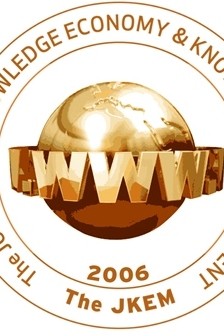TEKNOPARKLAR VE TEKNOLOJİ ÜRETİMİ: İZMİR TEKNOLOJİ GELİŞTİRME BÖLGESİ ÖRNEĞİ
Bu çalışmanın amacı, İzmir Teknoloji Geliştirme Bölgesi (İZTEKGEB)’nde firmaların yenilik performansının belirleyenlerini incelemektir. Sürdürülebilir rekabet gücü, yeni teknolojiler üretme ve bunları üretime dönüştürme yeteneğine dayanmaktadır. Küresel rekabet süreci, ülkeler düzeyindeki rekabetin giderek, bölgeler düzeyine indiği bir çizgide seyretmektedir. Bu nedenle, firma başarısı için coğrafi yakınlığın önemi giderek artmaktadır. Ekonomik aktörler arasında bağlantılar, işbirliği, rekabet gibi kanallar aracılığıyla, bilgi paylaşımı, taşma ve öğrenme etkilerinin ortaya çıkması söz konusu olmaktadır. Teknoparklar bu tür fırsatlar için uygun ortam sağlarlar. Anket ile elde edilen verilerle yapılan ekonometrik tahmin sonuçları, uluslararası düzeyde Ar-Ge işbirliği, Ar-Ge destekleri, firmada çalışan akademik personel ve teknopark içindeki firmalarla işbirliğinin firmaların patent ve faydalı model başvurusu yapma olasılığını arttırdığını göstermektedir
Anahtar Kelimeler:
Teknopark, patent, Ar-Ge işbirliği, coğrafi yakınlık, yenilikçi firmalar
TECHNOPARKS AND TECHNOLOGY PRODUCTION: THE CASE OF IZMIR TECHNOLOGY DEVELOPMENT REGION
The purpose of this study is to analyze the determinants of innovativeness of the firms located in the Izmir Technology Development Region. Sustainable competitiveness is based on the capability of production of new technologies, and on the transformation of them into new products. Global competition among nations follows a path gradually dipping into regional levels. Therefore, the significance of geographical proximity increases for the success of firms. One can mention in a local environment knowledge diffusion, spillovers, and learning through the channels such as linkages, cooperation, and competition among economic agents. Technoparks provide a convenient environment for such opportunities. The econometric estimation results utilizing the data produced by a survey conducted in the region suggest that international R&D cooperation, R&D subsidies, the share of employed academics, and the cooperation among firms increases the possibility of patent/utility model application of the firms in the region
Keywords:
Technoparks, patent, R&D cooperation, geographical proximity, innovative firms,
___
- Acs Z. J., Audretsch D. B., Fledman M. P. (1994), “R&D Spillovers and Recipient Firm Size”, The Review of Economics and Statistics, Vol. 76, No. 2, pp. 336-340.
- Ay, M. (2003). “Bölgesel ve Ulusal Kalkınmada Etkili Bir Mekanizma: Teknoparklar”, http://www.stradigma.com/turkce/eylul2003/makale_10.html, (10.01.2011).
- Babacan, M. (1995). “Dünyada ve Türkiye’de Teknoparklar (Bilim ve Teknoloji Parkları)”, Asil Ofset Matbaası, İzmir.
- Bayındır, S. (2005). “K.K.T.C.’de Teknoloji Geliştirme Atılımı”, II. Teknoparklar Zirvesi Bildiriler Kitabı, s. 59.
- Bilgili, A. (2008). “Üniversite – Sanayi İşbirliğinde Teknoparklar: Bursa Ulutek Teknoloji Geliştirme Bölgesi Örneği”, Çanakkale Onsekiz Mart Üniversitesi, Sosyal Bilimler Enstitüsü, Yüksek Lisans Tezi.
- Bilim, Sanayi ve Teknoloji Bakanlığı, (2012). “Bilim ve Teknoloji Genel Müdürlüğü, Teknoloji Geliştirme Bölgeleri”, http://www.sanayi.gov.tr, (10.05.2012).
- Cooke, P., Memedoviç, O. (2003). “Strategies for Regional Innovation Systems: Learning Transfer and Applications”, UNIDO Policy Papers, 2003.
- Delıchasanoglou, M. (2007). “Teknoloji Geliştirme Bölgeleri, Türkiye’deki Gelişimi, Sağladığı Vergisel Avantajlar ve Bir Anket Uygulaması”, İstanbul Üniversitesi, Sosyal Bilimler Enstitüsü, Yüksek Lisans Tezi.
- Devlet Denetleme Kurulu, (2009). “4691 Sayılı Teknoloji Geliştirme Bölgeleri Kanunu Uygulamalarının Değerlendirilmesi ile Uygulamada Ortaya Çıkan Sorunların Çözümüne İlişkin Öneri Geliştirilmesi”, Araştırma ve İnceleme Raporu, 2009/1, Ankara.
- Diez, J.R (2000). “The Importance of Public Research Institutes in Innovative Networks Empirical Results from the Metropolitan Innovation Systems Barcelona, Stockholmand Vienna”, European Planning Studies, Vol: 8, No: 4.
- Ertuğrul, A. (2011). “Yenilikçi Küçük İşletmelerin Finansmanı: Türkiye Uygulaması”, Kadir Has Üniversitesi, Sosyal Bilimler Enstitüsü, Yüksek Lisans Tezi.
- İZTEKGEB (İzmir Teknoloji Geliştirme Bölgesi) http://iztekgeb.iyte.edu.tr, (12.12.2011).
- Jeremy, D.J. (1991). “International Technology Transfer: Europe, Japan and the USA, 1700-1914”. Aldershot, Edward Elgar, p. 253.
- Keeble, D. (2000). “Collective Learning Process in European High-Technology Milieux, in the High - Technology Clusters, Networking and Collective Learning in Europe, Ashgate, England”.
- Keeble, D., Wılkınson, F. (2000). “High -Technology Clusters, Networking and Collective Learning in Europe, Ashgate, England”.
- Kiper, M. (2004). “Teknoloji Transfer Mekanizmaları ve Bu Kapsamda Üniversite-Sanayi İşbirliği”, Türkiye Odalar ve Borsalar Birliği 50. Yıl Yayınları, s. 105.
- Koschatzky, K. (2001). “Regional Development Through Entrepreneurship Promotion? The Role of Higher Education Institutes for Stimulating Firm Foundations”, 41st Congress of ERSA, Croatia.
- Longhi, C., Keeble, D. (2000). “High -Technology Clusters and Evolutionary Trends in the 1990s, in the High- Technology Clusters, Networking and Collective Learning in Europe”, Ashgate, England.
- Monck, C., Porter, R., Quintas, P., Storey, D., Wynarzck, P. (1988). “Science Parks and The Growth of High Technology Firms”, Peat Marwick Mc Lintock, s. 249.
- Özveren, M., Gürsu, M. (2004). “Organizasyonlarda Bilginin Yaratılması Süreci ve Bu Süreçte Liderliğin Önemi”, 3. Ulusal Bilgi, Ekonomi ve Yönetim Kongresi, 25-26 Kasım, Eskişehir.
- Porter, M.E. (1998). “Clusters and New Economics of Competition”, Harvard Business Review, 76 (6): 77-90.
- Resmi Gazete, “06.07.2001 tarih ve 24454 sayılı resmi gazetede çıkan “4691 sayılı Teknoloji Geliştirme Bölgeleri Kanunu”, http://www.resmigazete.gov.tr/ (09.12.2011).
- Yayın Aralığı: Yılda 2 Sayı
- Başlangıç: 2006
- Yayıncı: İbrahim Güran YUMUŞAK
Sayıdaki Diğer Makaleler
PERFORMANS DEĞERLENDİRMENİN ETKİNLİĞİ AÇISINDAN DEĞERLENDİRME AMACININ VE CİNSİYETİN ROLÜ
Adem BALTACI, Hüseyin BURGAZOĞLU
Ömer TORLAK, Volkan DOĞAN, Behçet Yalın ÖZKARA
TEKNOPARKLAR VE TEKNOLOJİ ÜRETİMİ: İZMİR TEKNOLOJİ GELİŞTİRME BÖLGESİ ÖRNEĞİ
Tuğba Gökdoğan GÜL, Serhat ÇAKIR
LEADERSHIP DEVELOPMENT PROGRAMS: AN INTEGRATED REVIEW OF LITERATURE
Michael J. KIRCHNER, Mesut AKDERE
TEKNOLOJİK DEĞİŞİM VE REKABET GÜCÜ İLİŞKİSİ: TÜRKİYE ÜZERİNE BİR UYGULAMA
Ekrem Erdem Ahmet KÖSEOĞLU, Ekrem ERDEM
EKONOMİK ENTEGRASYON – EĞİTİME ERİŞİM İLİŞKİSİ ÜZERİNE EKONOMETRİK BİR İNCELEME
